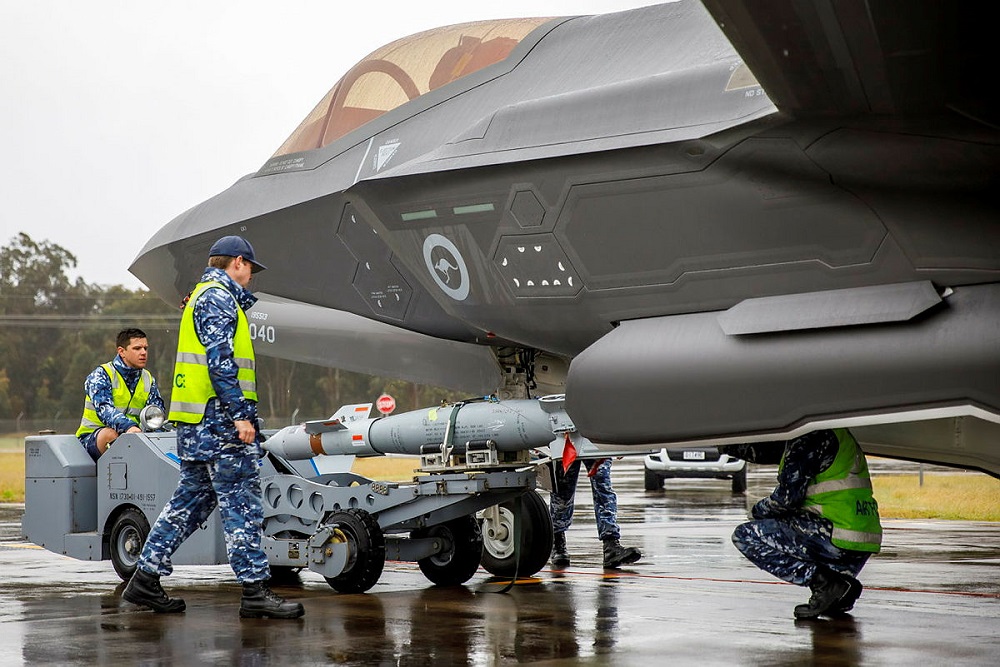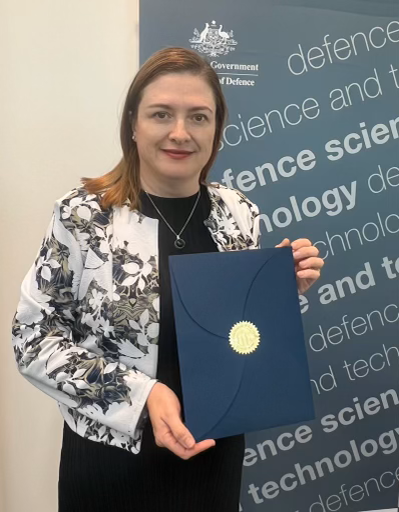Foreword
Australia has recently been forced to cross a Rubicon. Its wholehearted embrace of global free trade and just-in-time supply chains has had to confront the hard reality of geopolitics. In many parts of the world, geopolitics is choking free trade, and China—Australia’s largest trading partner—has shown itself particularly willing to use trade coercively and abrogate its free trade commitments, not just with Australia, but with countries all around the world.
Advanced technologies are at the centre of this geopolitical struggle, because of the risk that withheld supply poses to national economies and security. As Covid-19 disruptions have demonstrated, the risks are not even limited to deliberate coercion.
In this environment, bold action is warranted. Continuing to do what we did before is not an option because it will undermine the national interest. A new approach is needed that’s in part heretical to our old market-based approach but is driven by necessity: government intervention that works in tandem with industry expertise and drive.
In this important policy brief, Alex Capri and Robert Clark lay out a vision for Australia to secure its place in the global semiconductor industry—an industry they describe as ‘the single most important technology underlying leading-edge industries’.
Their proposal is to stimulate A$5 billion of semiconductor manufacturing activity through A$1.5 billion of government investment and financial incentives. Those subsidies and tax concessions would mirror similar initiatives such as the US ‘CHIPS’ and ‘FABS’ Acts, but are focused on Australia’s interests.
They identify a logical niche for Australia that would initially establish a distributed commercial compound semiconductor foundry capability across Australia via a public–private partnership. In the longer term, they propose establishing a commercial silicon complementary metal-oxide semiconductor foundry at mature process scale.
Government intervention in a market shouldn’t be made lightly, but Capri and Clark make a compelling case to do so. If policymakers agree that Australia needs access to semiconductors and that their supply from elsewhere can’t be guaranteed, then intervention is imperative.
This policy brief lays out a ‘moonshot’ to get Australia there.
Fergus Hanson
Director, International Cyber Policy Centre
What’s the problem?
Semiconductors (also known as ‘microchips’ or ‘chips’) are the single most important technology underpinning leading-edge industries. They’re essential for the proper functioning of everything from smartphones to nuclear submarines and from medical equipment to wireless communications.
Australia’s notable lack of participation in the global semiconductor ecosystem has put it at a geopolitical disadvantage. As a nation, with some niche exceptions, it’s almost entirely dependent on foreign-controlled microchip technology, making it increasingly vulnerable to global supply-chain shortages, shutdowns and disruptions. Such occurrences have become all too common, either because of events such as the Covid-19 pandemic or because of other governments’ attempts to weaponise supply chains for geopolitical reasons.
Having unfettered access to microchips is a matter of economic and national security, and, more generally, of Australia’s day-to-day wellbeing as a nation. In an increasingly digitised world, policymakers must treat semiconductors as a vital public good, almost on par with other basic necessities such as food and water supplies and reliable electricity—a reality that would become immediately apparent in a time of international crisis resulting from, for example, wars or natural disasters.
What’s the solution?
Australia must conceive, develop and execute a national plan that will enable capacity building in the semiconductor space. To do this, leadership must embrace bold thinking and adopt its own version of a 21st-century ‘moonshot’. Instead of landing astronauts on the Moon, however, as the Americans did in their own original moonshot in a Cold War space race against the Soviet Union, Australia faces an equally daunting task: from a low base, breaking into the world’s most complex, expensive and strategic technology ecosystem.
To achieve that, the Australian Government must do four overarching things.
First, it must embark on an epic technology-transfer initiative. To be successful, Australia must attract and absorb leading-edge technology, human capital (talent) and investment through a range of strategic partnerships with world-class companies, universities and friendly governments. The good news is that Australia already has a wealth of resources and building blocks to which it can turn to bring this to fruition.
Second, it must leverage its security partnerships and alliances with the US, Britain, Japan and others to tether the development of its semiconductor capabilities to evolving mutual defence needs and related innovation. Security alliances such as the Quadrilateral Security Dialogue (the Quad), AUKUS and the Five Eyes network must double up as enablers of Australia’s semiconductor sector (and other critical technology) advancement. The spillover to Australia’s commercial sector will be immense.
Third, Australia’s firms and local talent must become enmeshed in global value chains. Not just any value chains, however. Australia’s strategic industries must seek to secure supply-chain arrangements via bilateral, minilateral and multilateral agreements, and government should continue to participate in high-quality multilateral free trade agreements, assuming those agreements actually enforce rules and standards reflective of Australia’s core values.
Countries such as the US, the UK, Japan and South Korea, along with various EU nations, India, Taiwan and Singapore, show good potential for ‘friend-shoring’, meaning that they could provide safe havens for the ring-fencing of Australia’s strategic value chains. For example, Australia could join Washington’s ‘secure’ (‘China-free’) supply-chain arrangements with Taiwan, Japan and South Korea as part of the US Creating Helpful Incentives to Produce Semiconductors and Science Act (CHIPS Act) or pursue similar agreements with the EU’s nascent supply-chain security agreements as part of the EU’s European Chips Act. Bilateral and minilateral agreements are preferred. Such an outcome would be mutually advantageous to all parties, given the benefits of rationalised global value chains for the world’s most complex sector.
Highly specialised slices of the semiconductor value chain require a dizzying range of materials, processes, equipment and technologies from trading partners that must be relied upon to deliver the goods without the risk of sanctions, blacklists and export bans—or any other geopolitically motivated weaponisation of supply chains. Every niche player in Australia’s microchip ecosystem, therefore, must keep its critical production activities ring-fenced within ‘friendly’ geopolitical and geographical value chains.
Strategic friend-shoring and home-shoring must cover everything from localised rare-earth and critical-materials processing at the bottom of supply chains to the production of specialised microchips at the top end.
Fourth, Australia’s public sector must step up to facilitate the right kinds of public–private partnerships (PPPs), provide targeted funding for semiconductor R&D and education, and create commercial incentives for foreign and local investments. This will require adept ‘techno-diplomacy’ with foreign partners, as well as a deft touch regarding the local technology landscape, as too much government interference could impede Australia’s tremendous entrepreneurial spirit. This is a moonshot: big and bold actions and expenditures are needed, not overly cautious gradualism.
Executive summary
In this report, we set out to make specific recommendations underpinning an Australian semiconductor national plan. This is an urgent task, which is presented in a global context, with special emphasis given to the geopolitical complexity of semiconductor supply-chain issues and Australia’s important strategic alliances and partnerships.
Our analysis emphasises the centrality of a commercial semiconductor chip manufacturing capability, which is nearly absent in Australia. Developing other aspects of the semiconductor ecosystem is important, including critical minerals and microchip design, but those areas must be addressed concurrently, as part of a larger, decisive plan, not through a gradualist approach. Opting out of semiconductor manufacturing will severely constrain Australia’s growth as a technological nation and consign it to second-tier status.
International examples, and recent substantial incentives formalised by governments worldwide for this critical industry, such as the US and European ‘Chips’ Acts, are highlighted and provide guidance.
Australia has an R&D semiconductor fabrication foothold upon which it can build its new capabilities. Viable investment streams via the Australian National Fabrication Facility (ANFF) network under the National Collaborative Research Infrastructure Scheme must be increased substantially.
A sufficiently funded ANFF, with capability increased to pilot production in key nodes, could underpin closely located foundries via public–private partnerships (PPPs) with commercial manufacturing firms. As is the case for PPP developments in the US and UK, it’s proposed that Australia attract appropriately tailored foundry capability in compound semiconductors, and also in complementary metal-oxide-semiconductors (silicon CMOS) at mature process scale. The endgame is to address these key markets with a sovereign talent pipeline.
We provide a dollar amount estimate for that outcome, indicating a pathway to some A$5 billion of semiconductor manufacturing activity, stimulated by A$1.5 billion of government investment and financial incentives, including direct subsidies and tax offsets, which are part of that total.
As well as financial estimates, we address the issue of focus and the scale of an Australian semiconductor ‘moonshot’. We also map the four overarching actions that we’ve outlined under ‘What’s the solution?’ to quite specific recommendations. That mapping considers the current Australian semiconductor status quo to outline an existing foothold that Australia can sensibly build on. We also take note of significant US and UK government incentive schemes recently announced to strategically define and boost those countries’ semiconductor industries and supply chains, which Australia could proportionately finetune to its comparative stage of development.
In a geopolitical context, we focus on the task of creating and executing an Australian national semiconductor plan. At its heart, and notwithstanding the importance of microchip design and marketing, the central and most complex issue that will define such a plan is building a sustainable, appropriately scaled, strategic market-penetrating, trusted commercial semiconductor fabrication capacity across Australia. With this focus, in laying out an analysis of the semiconductor landscape, we highlight topics that should be at the forefront of the national discussion.
Those topics include:
- concentrating on different business models and capacity-building scenarios, including the medium-term consideration of ‘pure play’ manufacturing of compound semiconductors as well as connected ‘fabless’ activities in research, design and innovation
- over the long term, exploring the merits of the ‘integrated device manufacturing’ model and silicon chip fabrication at an appropriate entry point
- focusing on specialised chip production for a growing range of sectors, including the automotive, medical, communications, energy and defence sectors
- recognising the importance of so-called ‘trailing-edge’, ‘mature’ chip technologies and why they’re as important as ‘leading-edge’ semiconductors, in an economic and geopolitical context
- understanding the enabling role of trusted PPPs involving Australian and other leading universities and public-sector technology agencies, semiconductor companies and governments
- understanding the importance of technology transfer via defence-related alliances such as AUKUS and the Five Eyes and the role of government-funded research agencies in that transfer.













